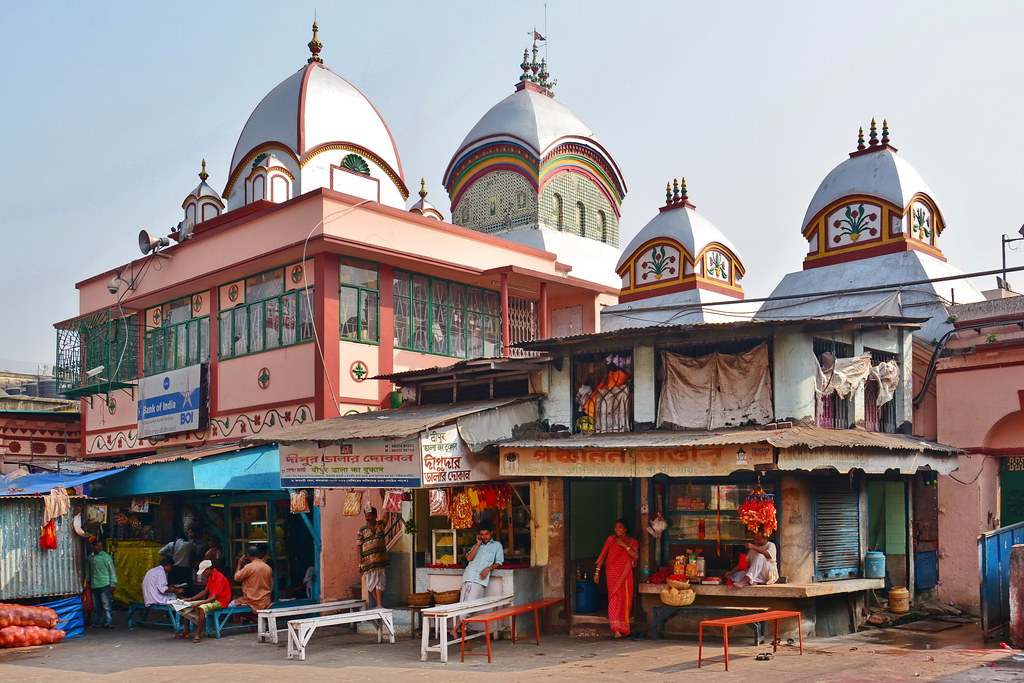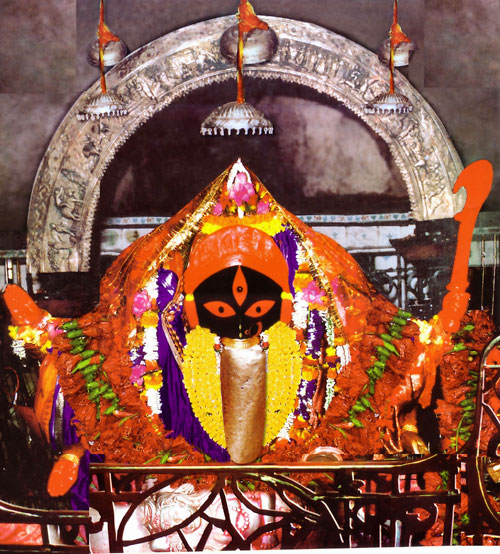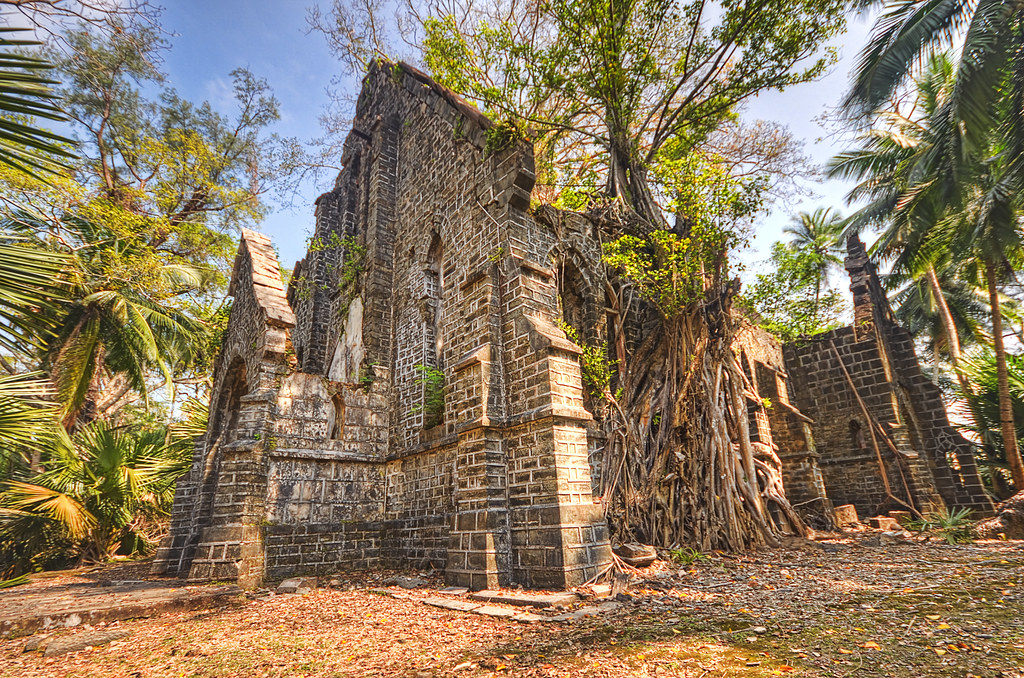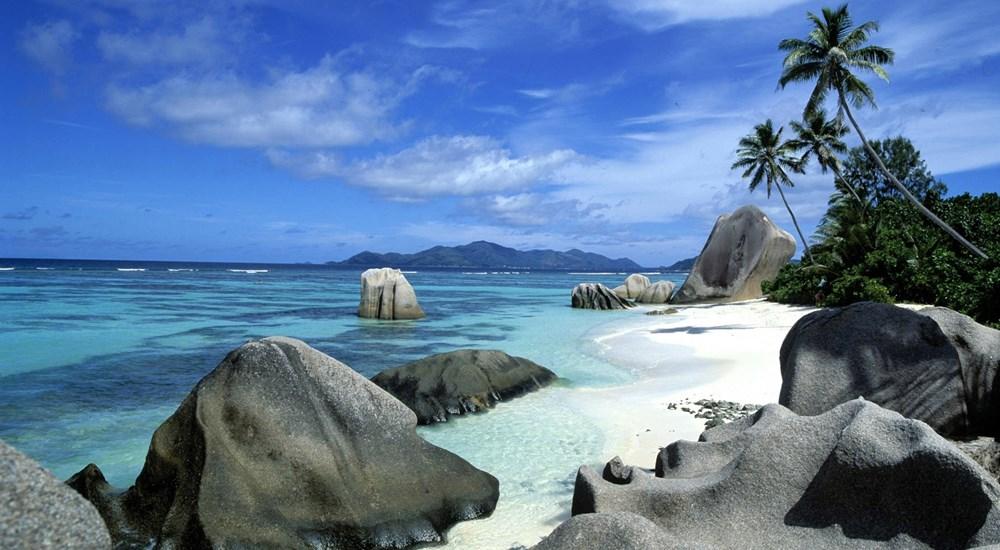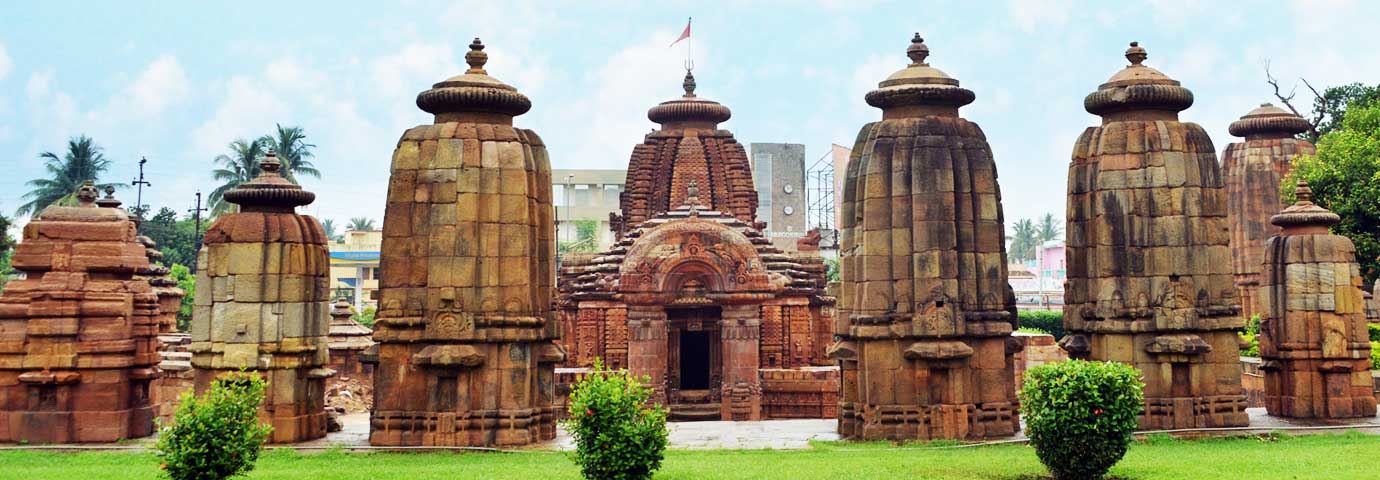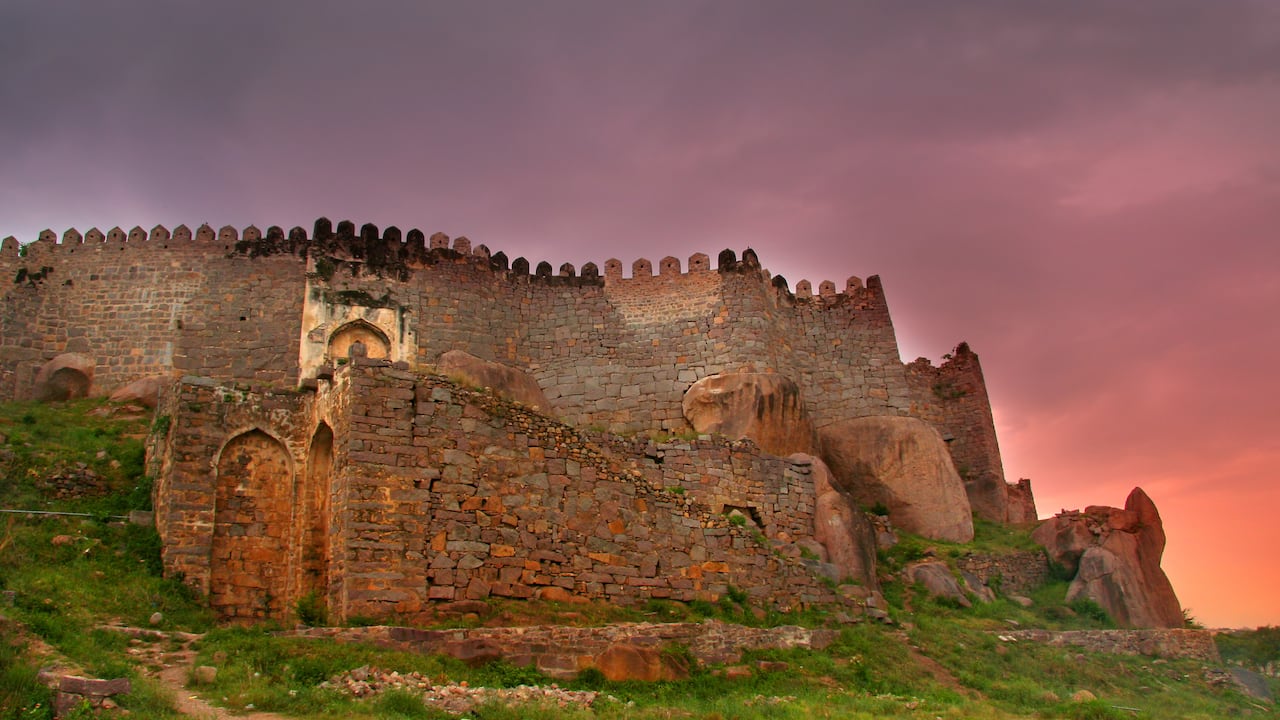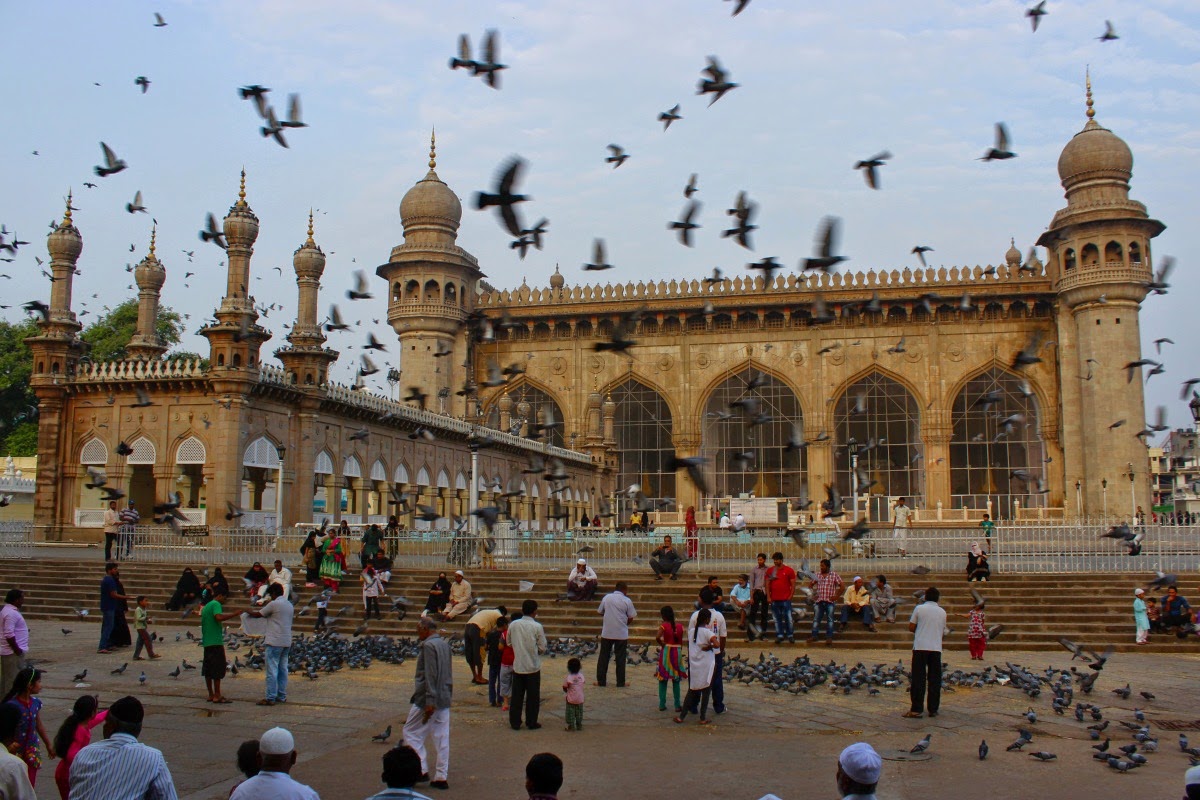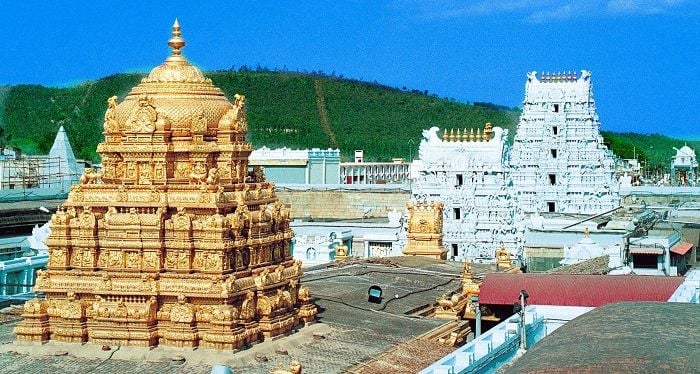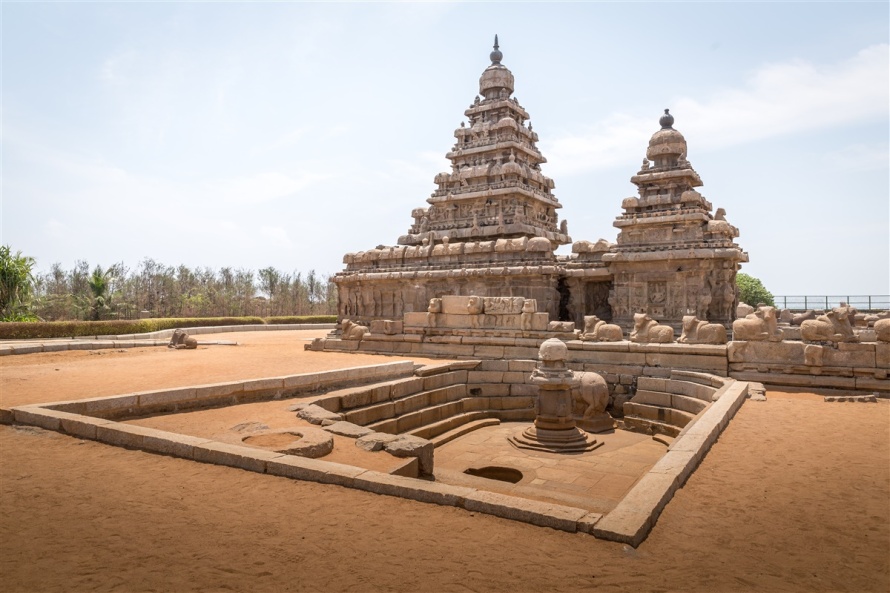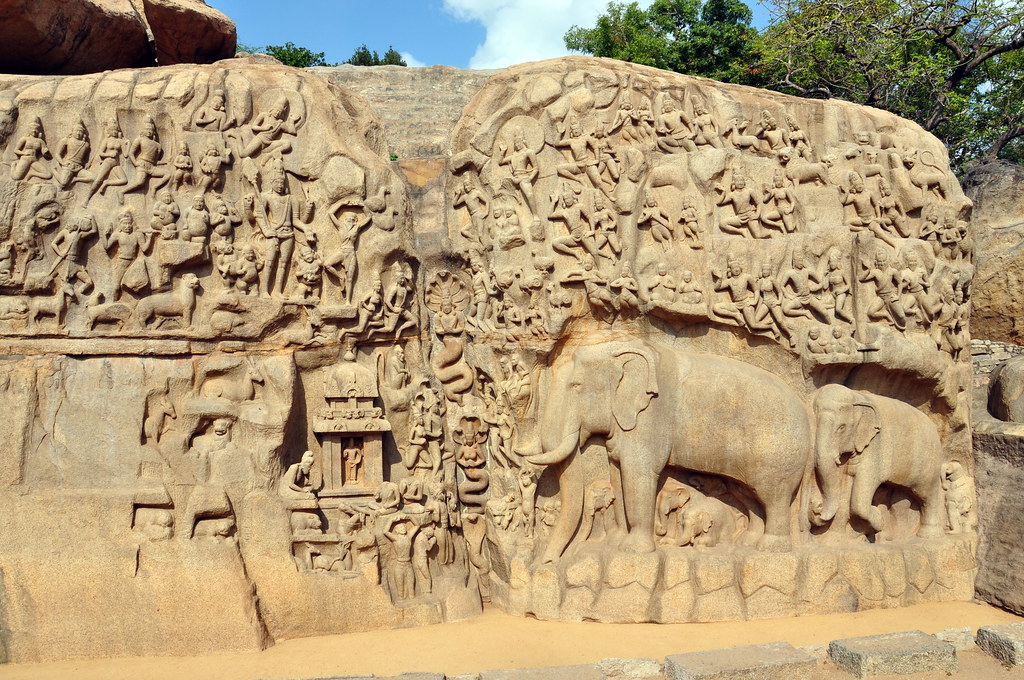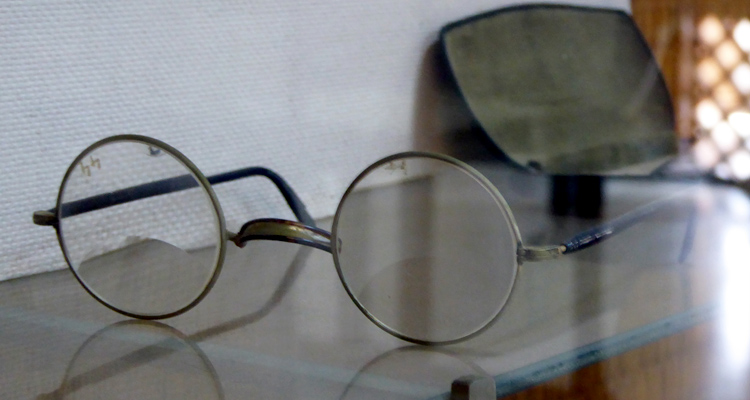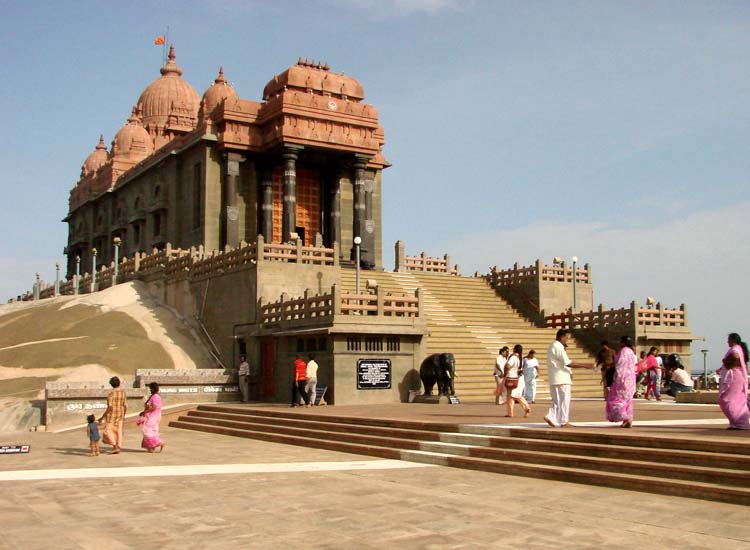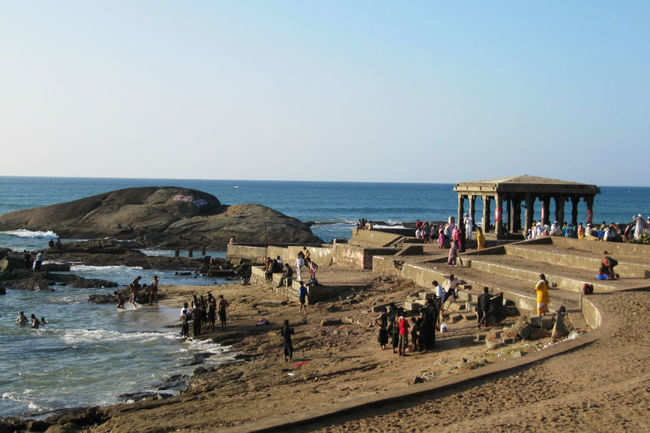Kolkata (pop 20 million) is the capital of West Bengal State and the third largest city in India. It was a rural backwater until the British merchant, Job Charnock started a colonial settlement in 1686 and a miniature version of London arose. In 1756, it was overrun and dozens of the colonial aristocracy were imprisoned in a cramped room beneath Fort William. By morning about 40 were dead from suffocation and the legend of the ‘Black Hole of Calcutta’ was born. The next year the town was retaken by the British, a stronger fort was built and it became British India’s official capital. The seeds for Indian independence were sown here and the colonial capital was transferred to the less troublesome Delhi. The 1947 partition was devastating with population migration almost entirely one way. About 4 million Hindu refugees from East Bengal arrived choking the already overpopulated slums. Abject poverty was everywhere. A second wave of refugees arrived during the 1971 India-Pakistan war. Calcutta lost its natural hinterland with partition, now behind a closed Pakistan (now Bangladesh). Labor unrest and the feudal system of land ownership have led to little maintenance of buildings and many of the fine old colonial buildings are crumbling. In 2001, Calcutta officially adopted the more phonetic Kolkata. A more friendly business attitude has resulted in an economic resurgence.
Arriving at 7:30AM, I got a hotel and readied for 2 days of heavy sightseeing. First I had to mail back by damaged Kindle for warranty purposes. The parcel counter didn’t open till 10 but it took half an hour to prepare the small box for shipping. All post offices have ‘wrappers’ to do the job. He carefully cut a piece of beige muslin cloth and using a needle and thread sewed the muslin beautifully around the box using at least a 100 stitches. About 12 wax seals were placed on the seam. Then he sewed in along one end the three folded custom declarations. I then addressed it and took it to the counter where it only cost about $6 to mail. This is just one of hundreds of goofy things they do in this country that make everything complicated. The bureaucracy can be overwhelming.
St Paul’s Cathedral (1847) has a central crenellated tower, wide nave and wonderful stained glass west window.
The Victoria Monument is a vast, beautifully proportioned festival of white marble: think US Capitol meets Taj Mahal. Designed to commemorate Queen Victoria’s 1901 diamond jubilee, it was not finished for another 20 years. Set in a huge park with several large reflecting pools, it is a magnificent sight. There is a painting gallery, exhibition of the city’s colonial history, and museum inside the soaring central chamber.
The Maiden is a 3km long park that extends north from the Memorial. New Market with its distinctive brick clock tower and atmospheric Hogg Market is worth visiting. The large meat processing plant inside is run by Moslems and thus cattle and everything else is butchered here. Even though it looks unsanitary, I wonder if it is cleaner than ours at home (think of the recent E coli outbreak in the Brooks, Alberta plant). The Indian Museum fills a colonnaded palace with zillions of exhibits (many in old-fashioned cases). The many animal dioramas containing birds and mammals (including the polar bear) were all the same dark brown colour as the specimens were so dirty.
Dalhousie Square is a large central square surrounded by many colonial-era edifices. Raj Bhavan, resembling the White House, is the residence of the West Bengal Governor and one can only peep through the ornate giant gates. St John’s Church was built in 1787. Inside are tons of marble plaques to British war veterans and outside in the graveyard is the 1902 Black Hole Memorial.
Howrath Bridge, built during WWII, is a 705m long abstraction of steel cantilevers, is an architectural icon and is one of the world’s busiest bridges. The best view is from Mullak Ghat on the Hooghly River.
On my second day, I started in north-central Kolkata, with its vibrantly chaotic alleys teeming with people and rickshaws carrying people and impossibly large amounts of freight. Hidden in the Old China Bazaar is the 1707 Armenian Church of Nazareth, the oldest place of Christian Worship in Kolkata. Cathedrals, synagogues (most now used for other purposes as the once 30,000-strong Jewish community is now down to about 30), and mosques with their impressive domes and minarets, dot the neighbourhoods. Old Chinatown is a maze of alleys and in one back lane, I encountered the only cows seen in the entire city. The Nam Soon Chinese church, a huge gateway once passage for domestic elephants, and a rubbish heap that supports a community of destitute scavengers were some of the scenes. Only about 50 Chinese families live in the area now and there are apparently 50 Chinese restaurants.
A not-to-be-missed attraction is the resplendent Marble Palace, one of my Kolkata highlights. A little run down, this grand 1835 raja’s mansion is astonishingly overstuffed with statues (a representation of every statue ever produced, it seemed), Victorian and Belgian glassware and mirrors, many paintings including some Reynolds and Rubens, huge oriental vases, and a vast array of big chandeliers. The guy was a megalomaniac collector. The floors were all lavish marble inlay.
Two stuffed moose heads were on the outside. Shot in Canada, they were labeled ‘Moose Deer’. There was even a small zoo with many birds and a few mammals in a setting of gardens filled with more statues and an artificial mountain. The free ticket to enter was only available at a tourist office miles away. Tagore’s House is the 1784 family mansion of India’s most famous poet.
I then took the metro down to south Kolkata (25 cents) to the Kalighat Temple, Kolkata’s holiest spot.
A tout took me first to the room where two young goats are slaughtered daily. Pilgrims filed through smashing a coconut on the floor and drizzling the milk over the sacrificial site. The goat was restrained by grabbing both front legs and swinging them around the animals back causing the head to be held straight out. It is then placed in a U-shaped device and a bar placed behind its head. A guy with a big sword then chops off its head. Wow. There was blood everywhere. A jostling pilgrim queue snakes into the main hall to fling hibiscus flowers at a crowned, black-faced three eyed Kali image.
The tout showing me around then suggested a $50 donation for the poor which I’m sure is simply pocketed. When dealing with these guys always have some small change in your pocket and say that is all you have.
After another metro ride north, I walked to Mother Theresa’s ‘Motherhouse’ where pilgrims pay homage to her large sober tomb. There is a museum and the ‘Mothers Room’ where she worked and slept from 1953 to 1997, preserved in all it’s simplicity.
My impressions of Calcutta were from reading the over 20-year-old “City of Joy” about life in one of Calcutta’s slums. There were now only a few rickshaw wallahs which have been replaced by huge numbers of old yellow Ambassador Classic Taxis. Men were taking baths in any water source and others sit on stools on the street getting shaves with a straight razor. I stayed in a hotel with a 28 bed ‘dormitory’ where I expected to possibly meet other travellers but I was the only westerner. One of the surprising things about India is that the vast majority of tourists are Indian and I go days without seeing any Westerners. With over a billion people and a growing middle class with money, it is easy for them to outnumber everyone.
ANDAMAN ISLANDS
The next day, I caught my 3 hour flight SE to the Andaman Islands, situated closer to Thailand but incorporated into India in 1947. Hot and humid, they have many endemic plants and animals. They were devastated by the 2004 Indian Ocean earthquake and tsunami, when about 1/5th of the population was killed. I arrived in Port Blair (pop 100,000), the capital, and was traveling with a young Israeli.
We visited Ross Island, a short ferry ride south. This is like discovering a jungle clad Lost City, where the ruins are Victorian English, along with several Japanese pill boxes from the second world war. The former administrative headquarters for the British in the Andamans, it was all wiped out in the 1941 earthquake, and now the crumbling walls are enveloped in huge strangler fig trees a la Angkor Wat.
The very nice church still had all its great stone walls standing and one can only imagine how opulent the place once was.
The Cellular Jail, once the British prison for Indian political dissidents, became a university for freedom fighters in the early 1900s. Its 7 wings held 698 prisoners.
Unfortunately, there was no diving so we moved on after 2 nights to Neil Island, a 2-hour ferry ride NE. Very tranquil, it has few beaches and the snorkelling opportunities were minimal so we continued on to nearby Havelock Island, the main tourist destination in the Andamans. About 25 resorts line Beach #3 and 5. They are all situated back from the trees and all one sees from the water are an unbroken line of palm trees.
I took my Advanced Diving certificate and had 5 dives. If ever there was evidence of global warming, the best example would be all the dead coral from elevated sea temperatures. We saw some great coral and fish at Dixon’s Pinnacle, a sea mount well out from shore. At least 90% of the tourists here were Israeli. One or two are often great company but with any more, all one hears is Hebrew. Most seem to come here for at least 3-4 weeks but a week of relaxing was enough for me.
In the south of the Andamans are several islands that are off-limits to tourists – one is North Sentinel — this is a short bit I found in the Economist about it (Nov 2018).
North Sentinel has few visitors, which is just as its 150 or so residents want. The 30,000-year-old tribe on the tiny island in the Andaman archipelago in the Bay of Bengal has had almost no contact with the outside world since 1991. So when John Chau, a young American missionary, paid some boatmen to drop him off on the island last month he was greeted with bows and arrows. The same happened in 2006 to two Indian fishermen who drifted ashore when they were asleep on their boat. All three were killed.
The Sentinelese may be the most isolated people in the world. For the past 20 years the Indian government, which administers the Andamans, 1,300km east of India’s mainland, has decreed that they be left entirely alone, though periodically it checks from a distance that they are not suffering an epidemic. Since they probably lack any resistance to new diseases, contact with outsiders might kill them. The Indian government will make no effort to find Mr Chau’s killers, and has no plans to retrieve his body.
It is not yet clear if the tragedy will have long-term ramifications for the Sentinelese. Nevertheless, thanks to a long fight for indigenous rights, they have a better chance of survival now than they did a generation ago. The same holds true for many other indigenous peoples, broadly defined as groups that preceded today’s dominant societies and have tried to resist integration into them.
BHUBANESWAR
On December 21 (the world did not end! – what hogwash to think that the Mayan long count calendar actually said anything about the end of time), I had a huge travel day with a 2 1/2 hour ferry ride back to Port Blair, a flight to Kolkata and then a gruelling 11 hour bus ride south to Bhubaneswar (pop 690,000), the capital of Odisha State. With a thriving culture dating back to well before 300 BC, it was a formidable maritime empire with trading routes extending as far as Indonesia. As recently as 2008, there has been considerable violence against Christian fundamentalists. Bhubaneswar is known as India’s Temple City. It once boasted 7000 medieval temples, but now only about 500 Hindu temples remain and is a heavily visited domestic tourist destination with no Westerners.
I went on two day-long tours organized by the Odisha Tourism Development Corporation. Puri (pop 160,000), with its long, sandy beach (swimming dangerous due to currents), is best known for Jagannath Mandir, a mighty temple dedicated to an incarnation of Vishnu. Built in 1198, it is surrounded by huge walls and its 58 m high, whitewashed spire (all Hindu temples look like huge narrow bee hives) is topped by a wheel of Vishnu. Hinduism must be one of the most exclusive religions as most active temples are closed to non-Hindus. I had mediocre views from the roof of a decrepit library across the street. Jagannath is represented by a jet-black deity with large, round, white eyes and is accompanied by his brother and sister in the assembly hall. 6000 priests continually garland and dress the three throughout the day for different ceremonies and 20,000 people are divided into 36 orders and 97 classes depend on the temple for their livelihood. Puri is one of the four holiest pilgrimage cities in India.
Konark (pop 15,000), only 30 km away, is known for its iconic Sun Temple, a Unesco World Heritage Site. Constructed in the 13th century, it was conceived as the cosmic chariot of the sun god Surya.
Seven mighty prancing horses (representing the days of the week) move the 40 m high granite spire on 24 stone cartwheels (representing the hours of the day) that stand around the base.
The intricate stone carving everywhere was amazing and it is famous for all its erotic karma sutra scenes, all big statues high on the walls.
Elephant and horse statues trampling soldiers are on the grounds. Huge iron beams form the lintels over doors and arches. We also stopped on the first day at Pipli, a town known for its handicrafts, especially applique.
The tour on day 2 was based around the city. Nandankanan Zoological Park is one of India’s best and has the largest number of white tigers in the world. Besides the usual zoo stuff, it is best known for its lion and tiger safari where the people are inside the cage of the bus. With huge crowds, it was more interesting looking at all the people. Udayagiri and Khandagiri Caves are two hills riddled with ornately carved rock-cut shelters. Carved in the 1st century by Jain ascetics, there are at least 14 caves.
Lingaraj Mandir is a 54 m high Hindu temple dedicated to Tribhuvaneswar (Lord of Three Worlds). Built around 1100, it is surrounded by 50 smaller temples and shrines enclosed by a wall. Closed to non-Hindus, I had good looks into the compound from a small viewing platform.
Mukteswar Mandir is small but has beautiful ornate carvings.

Just outside of town is the huge, white World Peace Pagoda (like the one in Pokhara, Nepal), built in 1972.
TELANGANA
Bhubaneswar is not an attractive town so at the last minute I booked a flight to Hyderabad (pop 5.5 million), the capital of Andhra Pradesh State (south of Odisha, pop 85million), one of the main seats of India’s mighty software dynasty, and the centre of Islamic India. The city was overrun by the Mughals in 1687, and then by the Islamic nizams in 1724 and the area became a focus for the arts, culture and learning. There is an abundance of rare gems and the world-famous Kohinoor diamond (now in the British royal crown) is from here. These furnished the nizams with enormous wealth.
Arriving late, I took a bus partway into the city and then hired a tuk-tuk for the rest of the way. As I could not make a reservation online, I had no hotel and the first several I went to were all booked. After several more minutes cruising around, I eventually found a place in a dodgy neighbourhood. I paid the most for a hotel room (about $22), which was also the worst room I’ve had in India – squat toilet, no shower, and dirty. Hotels have a 24-hour check-out rule here so my room was good till 10:30 the next night and I went out the next day to find a different room in a better neighbourhood. After several more stops, I finally found a better place for half the price. It was Christmas day and I took the day off to watch some TV, read, and get ready for 2 big days of sightseeing. This being my 7th year away from home, Christmas has lost most of its meaning.
The riots in New Delhi have been going strong. A 23-year university student was brutally raped on a bus by six men and eventually died of her severe injuries (surprisingly, she was sent to Singapore for medical care). The riots were about police corruption and the safety of women in India. They wanted the death penalty for all rapists. Rape is incredibly common in India (New Delhi with the most had almost 600 last year). As it is impossible to even touch a woman before marriage, and most don’t marry till the mid to late 20s, there must be a lot of sexually frustrated men out there. It is no wonder they have a problem. Most Indian men think Western women are ‘loose’. They are routinely groped and the comments in Hindi are very lewd.
Golconda Fort is built on a granite hill 120m high and is surrounded by a 5 1/2 mile wall constructed with large granite blocks and ramparts. The centre of the fort has a 1 1/2 mile wall enclosing several mosques, a royal palace, water tanks and lots to explore. The main entrance has a diamond-shaped ceiling creating an acoustic system that carries even the smallest echo across the fort complex and was used as a security system. The fort was eventually abandoned due to water shortage and Hyderabad was established.
Just north of the fort are the Qutb Shahi Tombs, one of the most incredible graveyards in the world.
Seven of the nine rulers are buried here in massive mausoleums. The largest contains the tomb of the 5th who reigned from 1580-1612 – it sits on a lower terrace 200 feet square and 18 feet high. A second terrace is 126 feet square and 6 feet high. The main room is 33 feet square inside and has 3 galleries culminating in a massive dome with 8 turrets on the corners. The smallest mausoleum is bigger than any other I have ever seen and contains the 7th ruler who died at 6 months of age. The huge area has several mosques and water tanks, some 100 feet deep. On day 2, I left my pack in the lobby of the hotel and explored all the sights south of the area I was in.
Chowmahalla Palace contains 4 dazzling palaces and was built between 1750 and 1850. The displays were poorly done but the buildings were impressive.

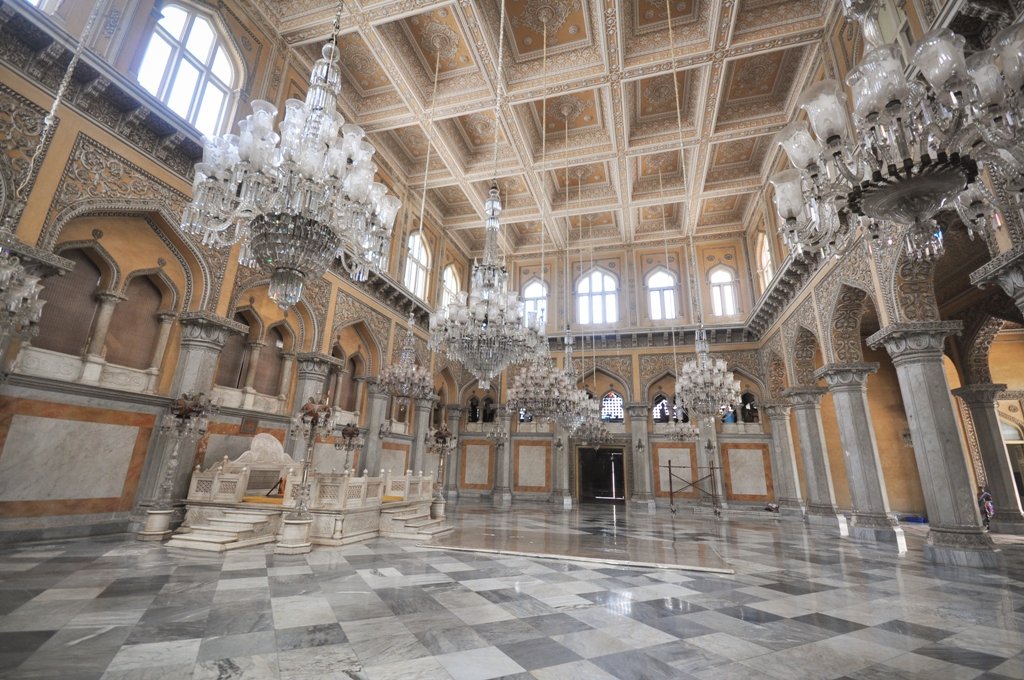
Mecca Masjid is one of the world’s largest mosques with space for 10,000 worshippers and security is tight.
Charminar is Hyderabad’s principal landmark and was built in 1591 to commemorate the founding of the city. The dramatic four-column, 56 m high and 30 m wide structure has four huge arches facing the cardinal points and minarets on each corner. I climbed up a spiral staircase inside one of the minarets to get great views of the city. There were many Muslims and all the women wore full burkas. This is surprising as all the photos in the museums show no burkas at all.
HEH the Nizam’s Museum was home to the 6th Nizam (1869-1911). His 72 m long, 2-story wardrobe of Burmese teak was for all his clothes as he never wore the same garment twice. The museum contains the gifts given his son for his Silver Jubilee, including many splendid silver replicas of buildings, projects and everything else.
Salar Jung Museum has a huge, varied collection of 35,000 exhibits and is one of the best museums I have ever been in despite the mammoth crowds.
TAMIL NADU
On to Tamil Nadu (pop 85 million), the southernmost state in India. On the way, I decided to stop in Tirumala to visit the busiest temple in the world Tirupathi.
Forty million Hindus visit every year. Arriving after 13 hours on the train at 7:30 AM, I caught a bus one hour up the 17 km long, switchbacking road to the top of the mountain and Tirupathi. Leaving my pack in luggage storage, I was allowed to join the darshan (fee) line for the normal cost of 300 rupees (~$6). I think they took pity on me. The people I joined had already been in line for two hours but didn’t seem to mind me budding in. Feeling lucky with my great break, I was optimistic that it would not be long. The free line was across a small lake in a cage of their own. Their route was longer than ours. It will take them twelve hours to reach the temple.
The Hindu religion has a pantheon of 33 million gods, of which Vishnu is the most important. Lord Venkateswara is believed by followers to be a very merciful form of Vishnu, being the fulfiller of every wish made to him by the devotees. This is important, as Hindu gods are viewed as being easily bribable. Venkateswara is known by other names, most notably Srinivasa – it can get very confusing. 1,500 years ago, the queen donated the 18-inch silver idol of Venkateswara to the sacred shrine. This idol is believed to be self-manifested, as there is no known sculptor possessing the capability to sculpt idols of god so proportionately. Further, no human being is known to have installed it in the shrine. Over the centuries, coronations were held in the temple and it received many gifts of gold and jewels. It is now the second richest temple in the world (number one is in Kerala, India). Indians take their religion pretty seriously.
Many devotees have their head tonsured as an offering to God during their pilgrimage. The daily amount of hair collected is over a ton. The hair thus gathered is sold by the temple organization a few times a year by public auction to international buyers for use as hair extensions and in cosmetics, bringing over $6 million to the temple’s treasury. This is the second-highest income-generating activity in the temple.
The line soon entered ‘the cage’, a six-foot wide tiled sidewalk enclosed with iron bars and chain link fence that snakes through the town. With a solid metal roof and a crush of people, there is no escape. Luckily bathrooms and emergency exits were occasionally accessible. A snack stand would have made a killing. I had one opportunity to buy some biscuits through the chain link. Snapping them up, I offered to share with everyone around me. They looked at me in very odd ways. Virtually no one accepted. I was in physical contact with at least two others at all times. Many were shaven bald and they kept feeling their head to remind themselves what they had done. Travelling only about one kilometre, you can imagine how slow this was moving. The line once stood still for over 30 minutes. Amazingly, some families had small children. I talked to 3 young guys from Bangalore for a while but otherwise interacted with no one. None showed any interest in me and I don’t speak Hindi. This was not a relaxing time.
After five hours, it looked like we were getting close when we entered a building for the obligatory security check. Security checks are a fact of life in India. There is always a metal detector, but these are universally ignored. Baggage is passed through X-ray and everyone gets a thorough frisk. Two lines for everything – one for men, one for women. Cameras are confiscated. I was told at this point that I could not go in as I was wearing shorts. Upset, I pulled them down to cover my knees and they let me continue on. We then entered one of three large rooms and waited for an hour. Somebody stood up to go to the bathroom and the crowd stampeded for the exit producing a crush of people at the narrow door. We then entered 4 connected rooms, each about 10X60 feet and with a small doorway at each end. You can imagine what happened at the door. I was in contact with at least six others in the squeeze. That led into a stairwell divided by a chain link to merge with the two-hour line. These people had booked at least one month previously for 50 rupees. I was jealous.
Then into another ‘cage’ and finally, after 7 fatiguing hours of shuffling along, we joined the free line inside the temple. Everybody was getting pretty excited. Wonderfully carved stone pillars and gold shrines were passed. As we approached the shrine to the powerful Lord Venkateshwara, Priests shoved us along and I had about three seconds to view a tiny stick figure down a dimly lit 30-foot-long corridor!!!. Pushed away from the “view”, I joined other lines to other shrines, one to his mother and another frenzied line where priests held a silver cup to the top of the pilgrim’s head. Our reward was a cookie ball.
Outside was a big crowd relaxing after the ordeal. Everyone admired the gilded gold roof of the temple. Open 22 hours/day, an average of 60,000 pilgrims come each day. But this was December 27 and most of India was on holiday. Apparently, 200,000 blissed-out folks saw him on my day. I can’t imagine it on its busiest when 500,000 visit. I guess it was worth it – certainly, it was amazing to see so many devoted people never complaining. Not surprisingly, I was the only Westerner I saw. Temple staff number 12,000 and the town has hundreds of apartment buildings.
Disorientated by the wandering route of the cage and intermediary buildings, I got lost trying to find my pack, but eventually made it down to Tirumala by 6:30. Then I had a four-hour bus to Chennai (pop 10 million, the fourth largest city in India – formally Madras), the capital of Tamil Nadu. I had only a small glass of chai and some biscuits that I was able to buy through the chain link fence to eat all day. It was late, I could only find a grungy room and stayed awake most of the night with mosquitoes.
Settled first about 1500 BC, TN was controlled by 3 large dynasties by 300 BC. The Tamils constructed huge cities rivalling any in China or Europe and has been attracting seafaring traders for 2000 years from China, Greece, Phoenicia, Rome and Babylon. Tamil ideas of reincarnation, karma, and yogic practice were spread to SE Asia. The end result of this cross-pollination was the architectural wonder of Angkor Wat, the gestation of Balinese Hinduism and much of the philosophy of classical Buddhism. The Portuguese and Dutch arrived in the 16th century but were replaced by the British in 1639. The French went to war, lost and withdrew to Pondecherry in 1756. The 2004 tsunami wrecked havoc here. Nowadays, most Tamils speak Tamil and more English than Hindi.
The next day was raining and grey, and I needed to decide if I was going to stay in the big, ugly city of Chennai to see a beach, a Catholic church, another big Hindu temple, a museum and a fort, or continue on. With it being a Saturday in the holidays, I was worried about getting a hotel room, so decided to hop on an early bus for the 2-hour drive south to Mamallapuram (pop 12,000). Situated on the Bay of Bengal, there is a nice surf break but swimming is not recommended due to the strong undertow. I got a great hotel room in the traveller’s ghetto and landed in Backpackistan to spend New Year’s. The many ancient temples in town form one large World Heritage Site, and it would take an entire day to see them all. The 7th-century Shore Temple stands overlooking the sea and has excellent proportions and carvings.
The Five Rathers consist of 5 temples, a lion and a finely sculpted elephant all hewn from one single granite monolith. Each temple is dedicated to a different deity and is covered in fine carvings.
Arjuna’s Pennance consists of relief carvings of scenes of Hindu myth covering one huge boulder.
A huge boulder known as Krishna’s Butter Ball balances precariously on one of the granite monoliths. The massive 250-ton boulder is 20′ high and 5m in diameter.
Many wonderful rock-cut temples dot the area. I hung out with four expatriates all working for foreign companies for two afternoons while in Mamallapuram. They had great insight into Indian culture and the workplace. Often they had to fire nonproductive employees who had been hired by their relatives. Most of them found women to be better employees than men and the most distressing thing about Indians was their lack of integrity. Corruption is rife and needs to be dealt with if India is to progress out of the third world.
I then went on a city-a-day tour. I changed buses in Pondicherry – with remnants of its French heritage overrun by Indian culture, I ate, went for a short walk and decided to carry on. Trichy (pop. 870,000) is in the centre of Tamil Nadu and has several must-see temples. Sri Ranganathaswamy Temple is the biggest temple in India – a city within a city. Getting to the inner sanctum (Hindus only) requires passing through some of several gateway towers.
The west one where I entered was a 74 m high rectangular tower, 35×20 m at the base and festooned with 1024 carvings (I would have thought there were more). The carvings are of deities and demons and are all brightly painted. One passes beggars, shops and Brahmins, and tiny temples to minor gods before reaching the inner chamber dedicated to Vishnu, here worshipped as Sheshashayana.
Sri Jambukeshwara Temple is one of the five elemental temples of Shiva worshipped here as a partially submerged Shiva lingam (closed also to non-Hindus). This too has huge gateway towers and thousands of intricately carved stone pillars.
The Rock Fort Temple is perched on a 83 m high massive outcrop. With two temples, the 437 stone-cut steps are worth it for the outstanding views of the city. Lourdes Church has great murals painted inside.
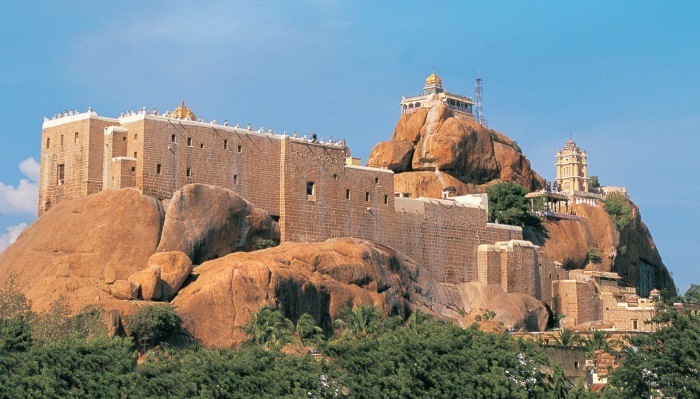
Hazrat Nathervali Darah is a mosque I visited but most mosques have little to offer on the inside (but are gorgeous outside with all their domes and minarets).
Three hours south of Trichy is Madurai (pop 2 million), one of the oldest cities in India – it once traded with ancient Rome. The Sri Meenakshi Temple is the cultural centre of Tamil Nadu. Dedicated to the triple breasted, fish eyed goddess Meenakshi Amman, it is considered the height of South Indian Temple architecture. It’s 6 acre temple complex is enclosed by a wall and 12 huge gateway towers, the highest is 52 m. All are carved with a staggering array of gods, goddesses, demons and heroes. The inner sanctum is surrounded by concentric corridors all with beautifully carved stone pillars and painted ceilings. Non-Hindus are not allowed in the inner temple.
The excellent Gandhi Memorial Museum contains a moving account of India’s struggle for independence from 1757 to 1947, that pulls no punches in its criticism of the British. The blood-stained dhoti he was wearing when assassinated in 1948 is here.
The Tirumalai Nayak Palace is a massive courtyard with huge columns supporting its walls. The average temperature has been in the mid-30s and the humidity high. This white boy found it uncomfortable. I can only imagine what it must be like here in the summer when the temperature is usually in the mid 40’s. The landscape is a sea of big palm trees and banana plantations. Most of the highways are tolled. It was then on to Kanyakumari (pop 20,000), the cape at the extreme southern tip of India and the terminus for a narrowing funnel of rounded granite mountains. The Kumari Amman Temple sits right on the point and I joined several thousand others at dawn to see sunrise over three oceans. An hour after real sunrise, we eventually saw a brief glimmer of the sun well above the horizon. I then budded into the line to go through the temple and it still was an hour before I got a glimpse of the virgin sea goddess. There are several other memorials not worth going to.


